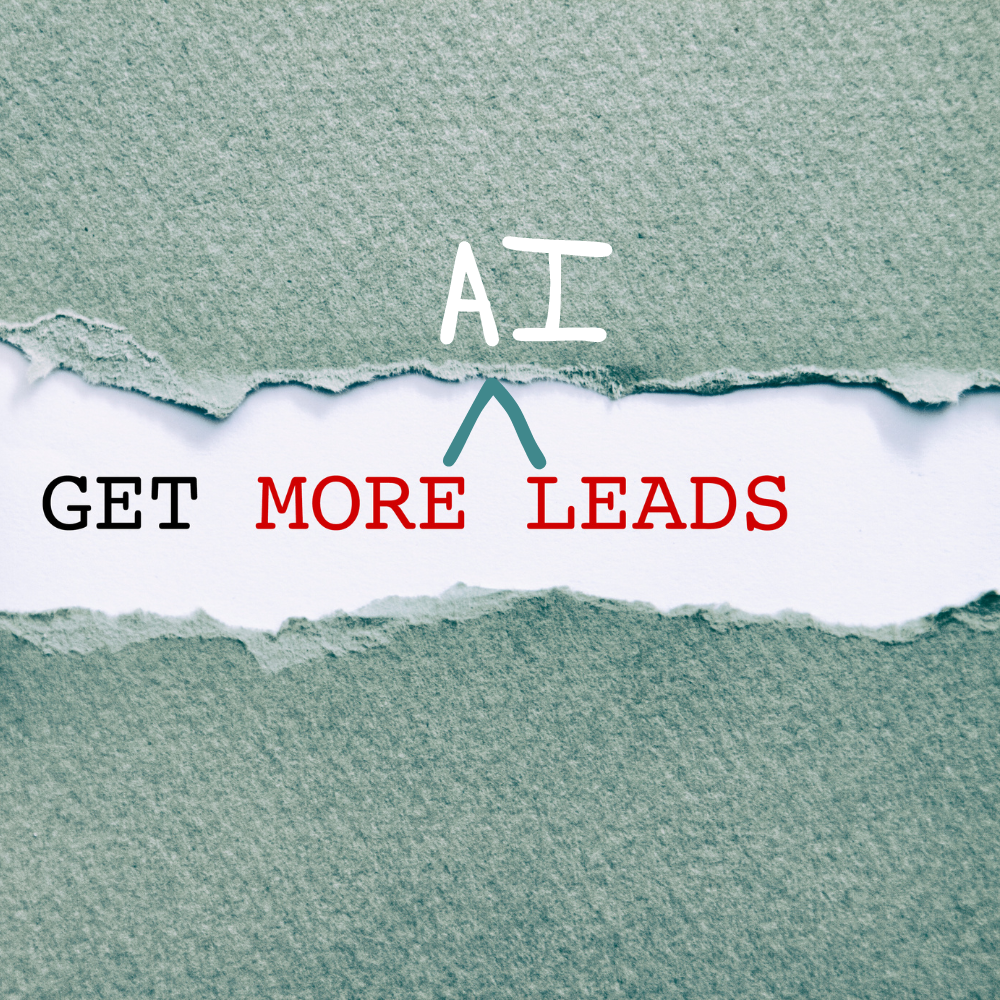In this episode, we explore a relatively new and rapidly growing segment of the commerce market – Social Commerce. Unlike traditional buying in a physical store or eCommerce buying from an online shop or marketplace, Social Commerce involves buying products while scrolling through social media platforms.
I delve into the specifics of what Social Commerce is, the platforms that support it, and the best practices for implementing it. With the continuous growth of this segment, it’s important for businesses to understand and utilize this innovative way of selling in order to stay competitive.
If you’re looking for fresh ideas to keep your business thriving, tune in to this episode to learn more about Social Commerce and how you can incorporate it into your marketing strategy.
Links Mentioned In This Episode
Products We Recommend
Articles & Episodes Mentioned in the Podcast
Episode 30- Getting More Revenue From Existing Customers Pt 1
Episode 31- Getting More Revenue From Existing Customers Pt 2
Episode 47 – Shopify Review
Episode 73- SEO For Ecommerce: Google Merchant Center
Episode 80- Shop App By Shopify
Love our Podcast? Buy us a cup of coffee to help keep creating for you – paypal.me/InkymaMarketingstrat
Sign up for our newsletter at marketingmasterminds.co Free marketing educational content with how-to videos delivered to your inbox.
What we discussed:
- What is social commerce?
- Social Media Platforms for Shopping
- Best Practices for Social Commerce
The Rise of Social Commerce: Exploring the Future of Shopping on Social Media Platforms Transcript
*Not ready to give this episode a listen or watch just yet? Below is a rough transcript of today’s episode.*
We have traditional buying in a store and we have traditional e-commerce buying from an online shop or marketplace, and we have a new segment. Social commerce buying while scrolling through social media. It’s not new, but it’s the largest growing segment of the commerce market at this moment. So today I’m going to chat with you about what it is, the platforms, and the best way to implement it so that you can keep on selling.
Okay. So before we start talking, social commerce. Got a little housekeeping stuff for you. I’m gonna be talking about products in this episode heavily talking about products. There are links to those products in the show notes. There are gonna be articles and additional other podcast episodes to support the concept along with a rough transcript.
So definitely go take a look at the show notes for all of this additional. also, we are partners with a lot of the products that I talk about in all of the episode. and what that means is if you use our links to purchase those products, we get a a small commission Think of it as a way of saying thank you for us producing all this great free content for you by using our links.
We really, really appreciate it when you use our links. And I don’t recommend products that we have not vetted, used ourselves in production for ourselves and for our clients. So many of the things I’m talking about, we have used for. . Okay. So what is social commerce? The best way I think to describe social commerce is to compare it with traditional e-commerce.
And I’m chuckling a little bit because I can’t believe I’m calling it traditional e-commerce. it’s been around for a while. My husband and I, we were actually. Some of the first Amazon users, way back when all Amazon did was sell books and we would buy so many books from them every single year. We’re like book nerds that they would send us gifts at the end of the year because we purchase so much.
we buy other stuff from Amazon now. Most of the stuff that we buy and, they don’t send us gifts anymore, which is kind of sad, but it’s the way it is.So let’s talk more about traditional e-commerce, right? That is Amazon, that is Walmart, that is Etsy. These are marketplaces. You can go put your stuff up there and buy from them, and then they’re your own websites.
Your domain, you get it hosted, and you can use tools like Shopify, BigCommerce, WordPress with WooCommerce and everything else out there, including MailChimp. MailChimp actually has an e-commerce platform built into it now. It is super simple, but it might be a great place to start. So now let’s talk about social commerce in comparison to that.
Social commerce is, Putting your products up on social media platforms like Instagram, TikTok, Pinterest, YouTube, and even Facebook. And they have features inside the apps for shopping. They have shoppable posts, product tagging, and then in-app checkout. So this is a win-win for you, the consumer and the app, the social platform.
the person buying gets to scroll, see you, look at your website, buy something, and then continue consuming the content, which makes the platform happy because the person is still on the platform and it makes you happy because you’re getting a sale. So it’s a pretty good system for everyone involved. now, the impact on the retail industry that social commerce has had is actually huge. Like I said, this is not new. It’s been around for a while, but it’s growing exponentially. . So sales from social commerce are expected to hit 56 point 17 billion. That is billion with a B in 2023, which is the year this is being recorded.
For those that might be listening a few the years later, and it’s gonna continue to grow in double digit percentages over the next three years. That is the projection because the platforms are only getting more popular and people are getting more and more comfortable with this type of. In fact, I think for some of the platforms, people will go there to start searching and buying than they would doing a traditional Google search and then waiting for a shop to pop up.
So now let’s talk a little bit more about the platforms themselves for shopping. So if you’re concerned about. of people on the platforms and how many are actually shopping. There are billions of people across all of these platforms, right? They all are in a different hierarchy, but there’s billions of people out there using social media.
And then the latest statistic is that 87% of these platform users are comfortable with shopping and buying, especially if they’re buying from an influencer on the platforms.
I’m starting with Instagram. I think this is the one that has the most awareness from a buying perspective, they have shoppable posts as well as you can shop through stories. They have product stickers that you can add stories, and then they have a explorer tab or a shop tab. They keep changing the name of it and this you can actually connect.
To your shop. I definitely know that it can, connect and integrate with a Shopify shop. I’ll talk more about the importance of that later. But note to self, this is really important, this integration piece and TikTok works in a very similar way. You can connect directly to your online store. It has direct integrations with Shopify and Big Commerce.
This is to support inventory. Management and order tracking with your platform. They also have a shop tab and you can browse categories of the types of things you wanna shop for. In TikTok, they have live shopping, so you can go live, promote your product, tag it as part of the video for better shopping experience.
I think about this and look at this and it’s like, wow. It’s like home shopping network. Right there, right on my phone. And then there’s Pinterest probably one of my favorite. social platforms and one of the few, probably the one that has had this type of feature the most. When Pinterest first started, they only allowed you to have, buyable pins if you had, I believe, a Shopify and a big commerce store.
And then it was just big commerce, right? that backend integration, had to be built so that you could buy it. It would show up in inventory, but today, their platform has also grown and become more sophisticated so that you can create viable product pins. You can upload your catalog, or you can actually just use URLs from your site to put in there to make them viable.
And these product pins can be saved just like regular pins, which means someone can shop for a bunch of different things, throw it into a. page for pinning, and then go and continue to either shop or look for other things from there. So this is really good. If someone is shopping for craft products or just whatever, where they’re trying to compare different things from different places, it’s a really good way to do this.
That’s kind ofone of the ways that I shop. I’m looking for certain types of products. Pinterest also has video now too. They have Pinterest tv, which is similar to TikTok, which is similar to Instagram stories and YouTube shorts where you can scroll through and you can actually purchase and buy and click through, the video portion as well.
So their platform has become very robust. And then the one platform that I think a lot of people are not talking about, but I am definitely including in this social platform, is YouTube. You can actually shop on YouTube while you’re watching videos. There is a barrier to entry. You have to have an eligible account, and that eligibility is pretty steep.
You have to be approved monetization, which as of right now is much easier than it used to be. But then the big catch is you have to have 20,000 subscribers in order to be able to turn this feature on. So you can’t just say, oh, I’m going to set up YouTube shopping. Open a channel and start selling.
It doesn’t work that way. Once you meet that criteria though, you can connect your storefront and feature your products, your merchandise in videos, in live streaming, and it also works for shorts too, which the shorts platform is starting to explode. . So here’s a kind of a cool concept. If you’re willing to put in the time and effort, grow a channel to 20,000 subscribers, get monetization because you’ll definitely qualify for the monetization there.
Make money from that as well as from, your merchandise. That could be like a whole ecosystem. And then you can also put it in the end screen boxes as well as you can put products in and pin it into the, the. As well. And the last one I am gonna share with you is Facebook. Just note, this is not my top recommendation, but they have the feature.
So Facebook over the years, has it invested in their technology or their systems and the platform is pretty buggy. Like I’ve spent a lot of time in the past on it and I go into it now and things don’t work the way that they used to things that are supposed to work and they’re not being fixed.
And so what this does is things don’t look right, they don’t work right. And that really messes with your, buyer’s experience and you have no control over. And what you want is for them to have a good experience. It needs to be easy to buy your things. And if Facebook’s technology platform is causing a problem with that, then that’s actually detrimental to your business because they’re gonna get frustrated and they’re not gonna finish the buying process, and they’re gonna have that mental connection with you, not just with face.
So keep that in the back of your mind when you’re thinking about branching and launching. This is, yeah, Facebook’s out there and you might say, why not connect? It actually may not be good for you to connect. So they do integrate with Shopify. I know that for a fact. and they integrate with big commerce.
You can upload a catalog directly as well. There’s not as many people using Facebook as these other. And Facebook is the worst offender for disabling accounts, in my opinion. Like they just do wholesale, disabling, and there is no recourse. I have seen them shut down businesses because the person that was running the business was only using Facebook as their platform, and they had no way to connect with their audience.
So just keep all of that in mind when you’re thinking about where to do social commerce. . So that leads me into the next section, which is Best practices for social commerce. I want you to set yourself up for success, and these are the key things that you need to do this. First and foremost, know what social media platforms, your target audience, the type of people who buy from you are using, you wanna put your products out where they are going to.
where they spend their time. If they’re spending hours and hours and hours of scrolling on TikTok and they don’t have a Facebook account or they don’t have an Instagram account, then why would you put your things there? Why spend that time? And then subsequently, if Facebook is the place that your people are at, then you go on Facebook, right?
And you just hope that the experience works.
As people are buying from you, from your different platforms, collect their information, name, address, telephone number, all the normal things that you collect as part of the buying experience, and pull that out into another platform. If you have a Shopify site, pull it into there. If you’re using MailChimp for email marketing, pull it there.
If you have to put it on a spreadsheet, put it there. The importance of this is, Policies or rules change on the platform, and you can no longer sell or you can no longer engage, or your account gets shut down for whatever reason. When they shut that account down, you have access to nothing. You can’t go in and pull your customer list, and sometimes they don’t even display the customer list for you.
And You can’t talk to those people. And if you listen to, episodes that I’ve done in the past about getting more purchasing and more revenue from existing customers, you’ll realize that this list of people that have already purchased from you are gold. if they had a great experience, they’re gonna buy from you again.
You may be doing reoccurring with them, and so you needed a way of being able to still contact them. If for whatever reason that original platform they purchased from that access is cut off from you. And then you can develop backup selling strategies. So another layer. Thought in that process is to make sure you have a traditional e-commerce storefront that you own.
So I’m not talking about the marketplaces, I’m not talking about Amazon, I’m not talking about Etsy or Walmart. I’m talking about a Shopify store, a big commerce store, WordPress with Woo Commerce, MailChimp, any of the options out there where. Your contract is with that platform to build an e-commerce site, and that’s what you pay for or you’re using the free version of. But that is the agreement. Those companies are there to serve you and if they don’t keep their customer base happy, then they’re gonna be outta business.
Unlike a social platform, a social platform is to keep the people consuming the content happy, cuz without them they don’t get revenue It’s a different model, a different business model, but it matters a lot. And then the last thing that I’m gonna share with you is about organic posting of non-product or sales posts.
They still matter actually. They’re really, really important. No one just wants to be sold to all the time from a company. And social platforms are not just about buying, they’re about consuming entertainment, educational content. For whatever reason, the person’s there, right? If they’re there to watch videos of dogs and cats playing together, snuggling, then you know, they don’t want you just always constantly selling to them.
They’re gonna keep scrolling right past you. So you need to have organic posting as part of your marketing mix as well. So using a product like social pilot where you can create and schedule posts that will go out to all of your platforms is really, really important to. , your audience of followers, warm and with you so that when you are selling, they are buying.
So now let’s talk about your next steps. What I like to call take action. So if you are a traditional retail store, you have a brick and mortar store, and you’re thinking about getting into e-commerce, maybe you haven’t done it yet. You need to start with building a website that is tied to your brick and mortar p o s system.
It may feel, extremely hard, daunting, but don’t skip that step. I’ve heard so many horror stories about inventory control issues that has stopped and crushed the e-commerce portion of a business in its tracks. Having an order come through that you don’t have the inventory for, and then having that order have to be canceled because of an inventory discrepancy is the kiss of death.
No one’s gonna come back and wanna shop from you after that experience. You just deflated their bubble. So make sure that you’re tied into your POS system, however long that takes before you venture out and try to start actually producing e-commerce. So once that’s in place, then you want to start connecting out to other platforms.
You can connect out to Amazon, to Etsy, to Walmart, and all of the social commerce platforms. In my mind, social commerce is just another, outlet and outreach outlet for your shop, whether that’s e-commerce, only, e-commerce, and brick and mortar. , that is your shop. Those are just extensions of your shop.
That’s the way to think about it. Shopify has amazingly easy integrations with I think all of these, or almost all of them. Maybe not YouTube, but I’m not quite sure about that. and then it will also integrate back with your POS system. And if you have a separate warehouse, maybe you’ve gotten, like you’ve got your retail shop, but you’ve got a warehouse you can integrate to both of those.
it is a very sophisticated system for whatever you need to do. what this does is it keeps one version of inventory management truth for your business, which is really, I. . So if you’re a home-based business, something a little simpler, still the same concept, just at a smaller scale, I want you to start with a traditional e-commerce store.
If you’re still in proof of concept, like you’re not quite sure, if what you’re trying to sell is where you wanna be in the next year, two years, three years, then start small, right? You can start with an Etsy shop. or even better, spend a little bit of money, get a Mail Chimp account and throw your e-commerce store up there.
And then you can also put it on Etsy, right? Cuz Etsy’s a great marketplace. It’s easier to be found, but I want you to have something that is still yours with your domain name that you have control over. Plus, when people buy from Etsy, you can put their information into MailChimp and keep talking to them.
You won’t be able to integrate or connect directly with the social platforms for social selling. But you can still upload directly to them, and you can still sell on Instagram and TikTok, but it’s safer doing it the way that I’m talking about here, as I’ve mentioned, because if those platforms shut you down for whatever reason, you still have your home base.
So here are my final thoughts for you on this. Half the battle with e-commerce don’t care what kind it is, is getting the technology and the connections correct from the start. Many companies that I talked to didn’t do that and they’re coming to me after the fact, trying to figure out how to fix this.
The other half is product marketing and. Like developing a product is one thing, but then getting images, descriptions, product, packaging, labeling, UPC codes, all of those things is the other piece of that. It’s gotta get ready to go out, be presentable, all that good stuff to create a good user experience.
So my team and I, we have a lot of experience in this, the entire process, not just building out your website, but the actual help with product development, and pieces associated to that. I’ve worked with quite a few companies from idea inception, meaning they’re like, I think I wanna build this all the way through to going to live production.
And we are a Shopify shop. . So if you wanna talk about your plans, your ideas, let’s schedule some time to talk through it and see where you’re going with this. It’s tricky stuff, but if you set it up correctly, you’re gonna have such a smoother journey than if you didn’t. Here at Inma, we love to give back to the business community, and we have created so many ways to do that.
So first, You can have a free 45 minute consultation with me to talk about e-commerce, or maybe you wanna talk about seo, or maybe you wanna talk about chat, G P T. Whatever you wanna talk about, that 45 minutes is for you. Just go to the inma.com website. That’s i nnk yma.com, upper right-hand corner, schedule a marketing evaluation.
Pick your date and time and we are together. Maybe you have a quick question. Maybe you have an idea for a show. I love. Go to the bottom of the page, any of the pages. There’s contact form. We respond to all of the valid contact form requests. Then we have Marketing Masterminds. We have a YouTube channel and a newsletter for Marketing Masterminds, the YouTube channel.
We walk you through how to do things via video share concept. And then we pull all of that in into the newsletter. And when we send down a newsletter, it’s like a little mini learning module. So we’ll put a video in there, put a couple articles or podcast episodes about a specific concept so you can get a whole idea about that one thing, not a bunch of different things, about a bunch of different things.
So hopefully you found this information useful and interesting for your business. If so, consider sharing it with other business owners that you know, if you are concerned or have struggles with this, other business owners are too. And so by sharing that, we’re helping everybody in the small business community, which is what we’re all about.
So thank you so much for listening, and I hope you have an amazing day.



























